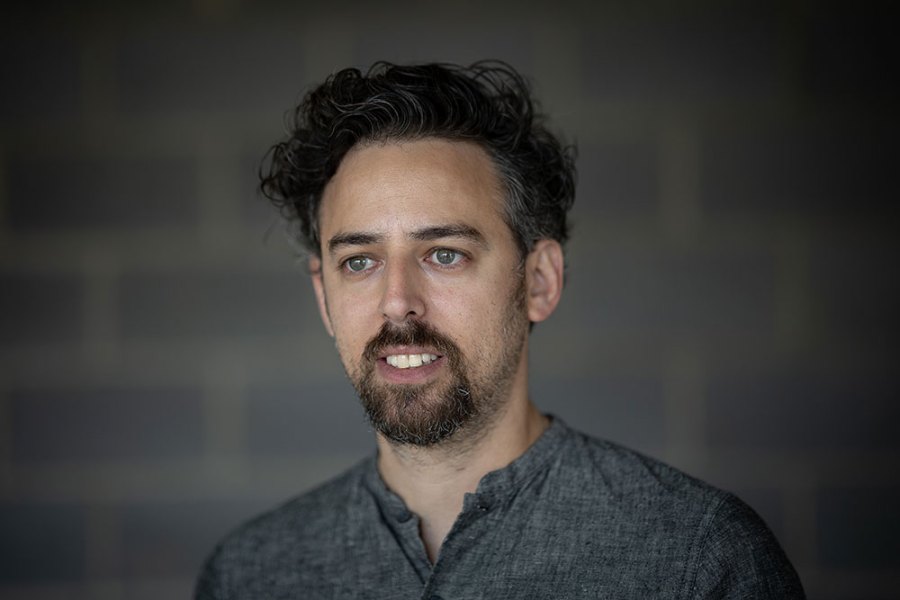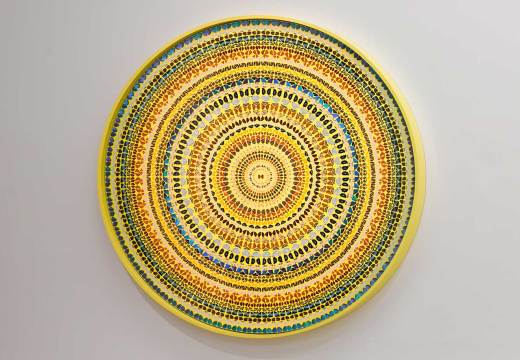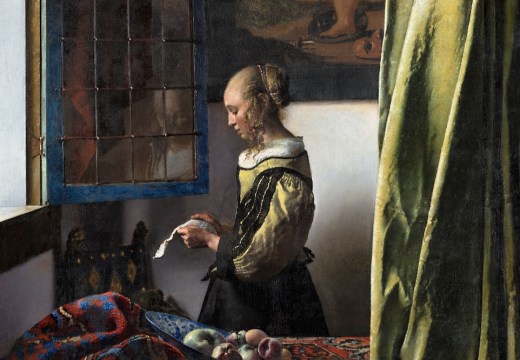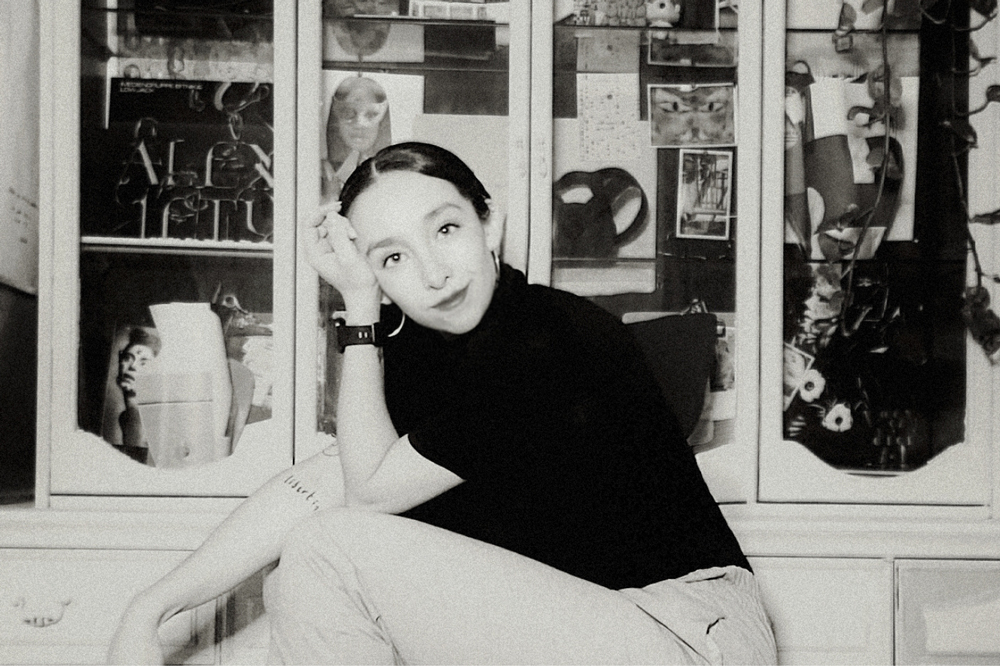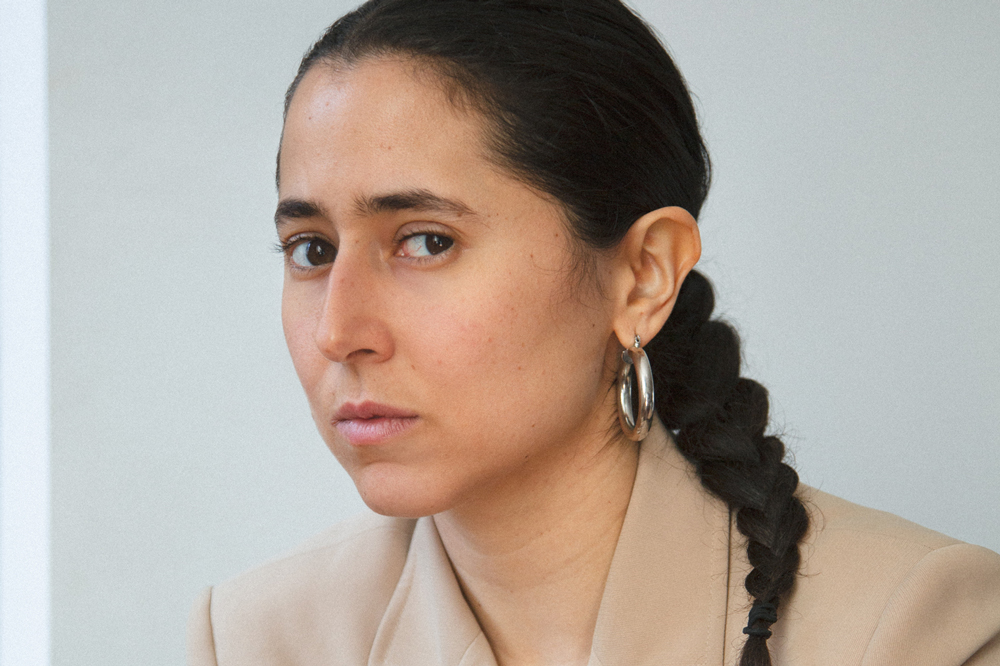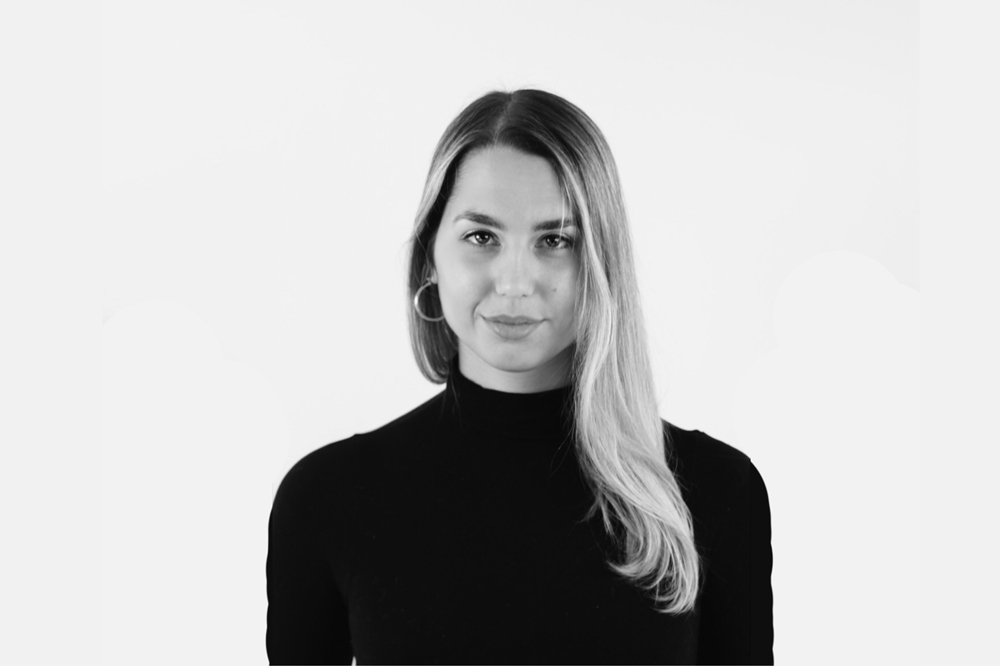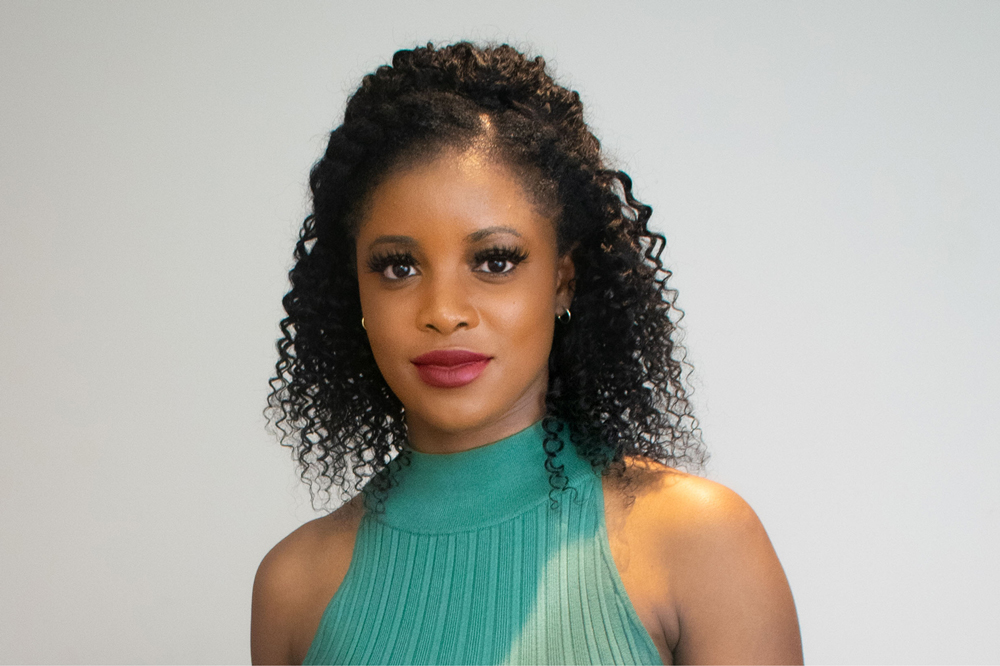Founder and creative director, Arebyte, London
Over the past eight years, as founder and director of the London-based non-profit Arebyte, Nimrod Vardi has developed a keen eye for artists working inventively with new technologies. For ‘The Choreography of Things’, one of the gallery’s first exhibitions, held in 2014, the Singaporean artist Choy Ka Fai measured brainwave data to explore a person’s neural activity while dancing; the show grew out of a residency at Arebyte. Many other projects like this have drawn artists to the UK, contributing to the country’s burgeoning digital and new media art scene. Arebyte has also cultivated an international presence: in 2019 the gallery produced Mark Farid’s Seeing I, for which the artist spent a day in the life of another person, as experienced through a VR headset; it was presented as a live performance at the Austrian festival Ars Electronica.
When I visit, the gallery is installed with an exhibition by American artist Ben Grosser. On view is a series of screen-based works critiquing the effects of software and social media; new commissions for the exhibition include Minus, a social network where each user gets to create only 100 posts, forcing them to opt for quality over quantity. If these works were presented side by side, they might give the impression of an IT lab, but instead the space has been reimagined as a tech expo, with screens hung in sections demarcated by scaffold frames and peppered with bean bags and cushions. The impressive staging gives a sense of what a traditional in-person exhibition might offer a body of work intended to be experienced online. ‘You can click on a link and go to a website and view it, but once you see a number of works together and once you see them bigger, you can understand the whole context,’ Vardi says. ‘That’s the curatorial process. It elevates.’
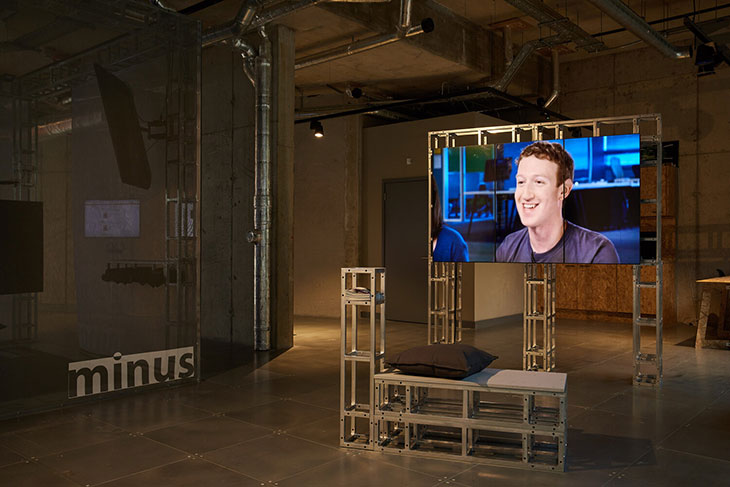
Installation view of Ben Grosser’s exhibition ‘Software for Less’ at Arebyte Gallery, London, 2021. Photo: Ollie Rudkin
Raised on a kibbutz in Israel, Vardi was obsessed with computers from a young age, disassembling and reassembling them until, in his teenage years, the screens began to trigger epileptic seizures. Forced to shift focus, Vardi went to Bezalel Academy in Jerusalem to study fashion and jewellery where, he tells me, he got into curating through working on the degree show. After graduating he moved to London and, in 2010, co-founded a gallery with affordable artists’ studios, an effort towards community building partly inspired by his socialist upbringing on the kibbutz.
By his mid twenties, Vardi had let his mind wander back to computers and was struck by the possibility of combining these two interests. He founded Arebyte in 2013, occupying a first-floor project space in the trendy surrounds of Hackney Wick. Four years later, as its small size began to stifle the ambition of his ideas, and as he felt the project struggle to make its mark on the local scene, Vardi made a bold move. Arebyte became one of the first inhabitants of the new London City Island development on the Leamouth Peninsula. There the gallery resides in a mixed-use building, part of a growing skyline of tall, shiny towers surrounding grassy squares. ‘People that come here have to venture all the way to see us,’ Vardi says, ‘so we need to deliver on that in terms of the experiences we give.’
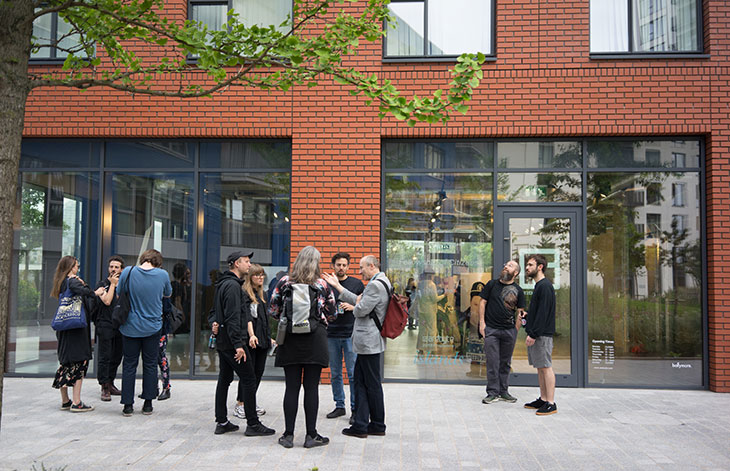
Photo: Andriana Oborocean
The journey is worthwhile for those seeking technologically ambitious work; Vardi and his team are at the vanguard in considering how to present this kind of art in a gallery context. ‘A lot of work is confined within screens, or defined by its technologies,’ Vardi says, citing virtual reality, which requires headsets, and augmented reality which relies on mobiles. A Master’s in curating contemporary design at Kingston University, though object-focused, helped Vardi get to grips with digital media. ‘I wanted to understand my relationship towards the physical object first, define that, and then move away from that as a reference point,’ he explains.
‘The best thing about technology is there is always new stuff – so there is always learning and always exploration,’ Vardi says. ‘How do you push the boundaries of what a technology can do? That’s the role of artists: to look at it slightly differently.’ This November, the gallery will be transformed once more, this time into an immersive arcade game developed by Danielle Brathwaite-Shirley off the back of her Black Trans Archive, an interactive online project which preserves the stories of Black trans people. ‘She is on fire,’ Vardi says of the artist with obvious excitement. ‘Her work grabs you by the guts and makes you think.’
The gallery was quick to adapt when the pandemic hit last year, and its virtual audience tripled to hundreds of thousands. Among its digital offerings are initiatives such as the Artist Chain, a ‘self-curated’ programme of online exhibitions in which each artist nominates the next, and Arebyte Skills, which moved online last year and offers affordable artist-led workshops on digital theory and commonly used software. An open call for work by disabled artists to participate in the online exhibition Open Screen, meanwhile, is part of an effort towards improving access. This concern with inclusivity is consistent across the gallery’s digital and bricks-and-mortar spaces: the annual Hotel Generation programme, aimed at emerging artists from outside London, offers mentorship and a fully funded solo show at Arebyte Gallery.
Aside from funding from Arts Council England, the organisation has relied on the revenue from some 170 affordable studios which are available to artists working in all media. Vardi plans to turn these into workspaces and labs specifically designed for digital art practices, with CGI, immersive technology and digital fabrication among the facilities. ‘We are working to build an ecosystem with larger exhibition spaces, more workspaces and learning facilities,’ he says. It would be the first of its kind in London – but still an intimate community, where ‘no one large institution calls the shots’. ‘It’s kind of an unknown realm, so we can shape the landscape in the way that we want,’ Vardi says. We are clearly in safe hands.
Unlimited access from just $16 every 3 months
Subscribe to get unlimited and exclusive access to the top art stories, interviews and exhibition reviews.

